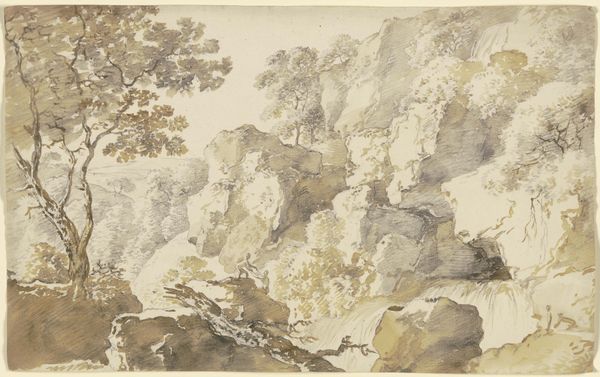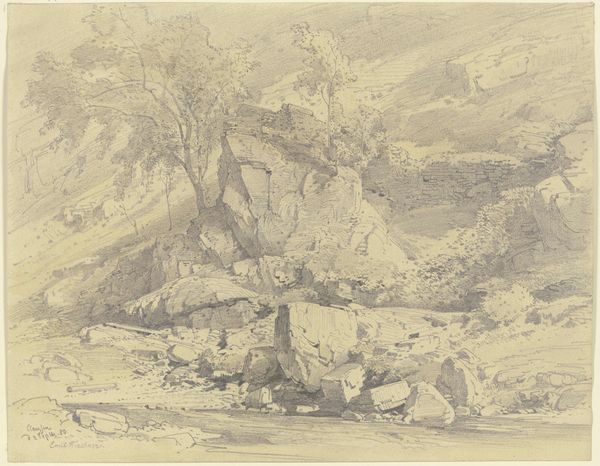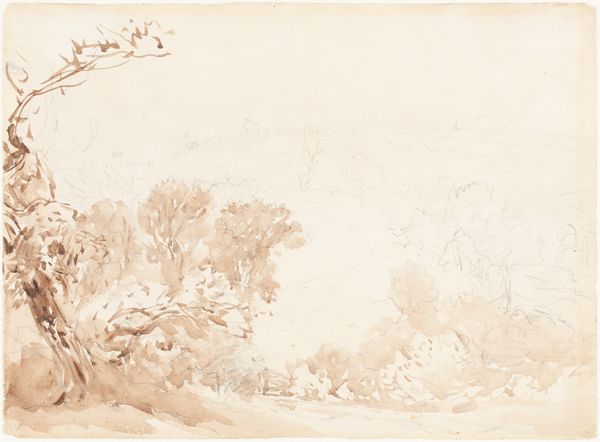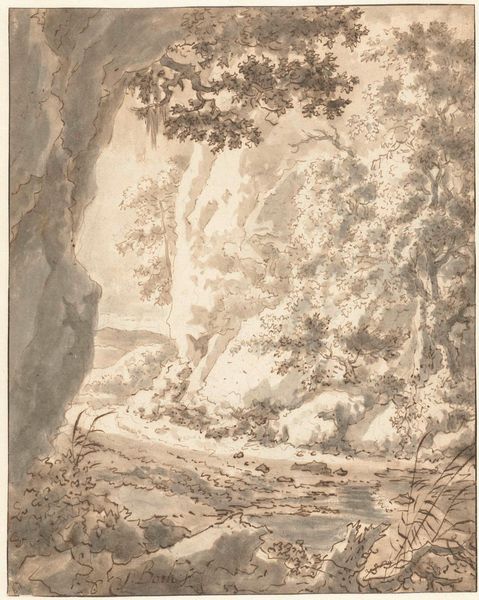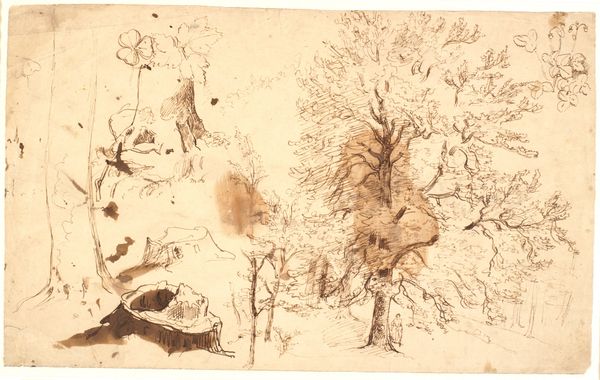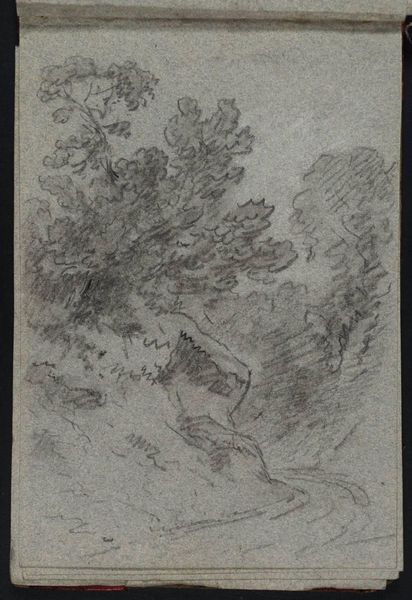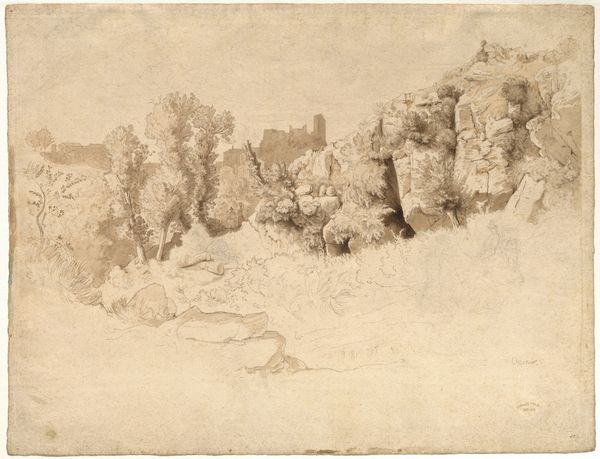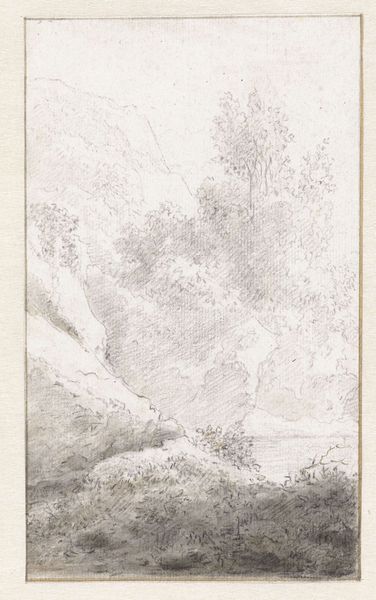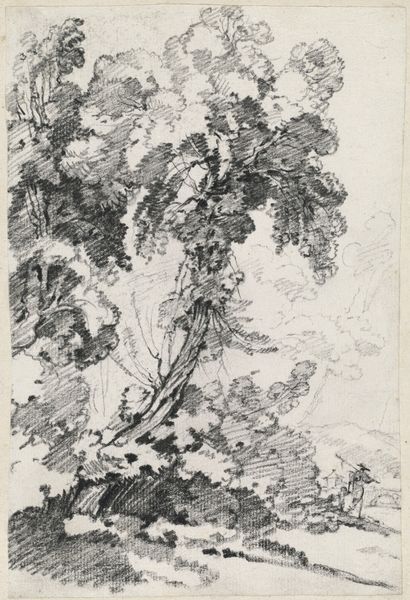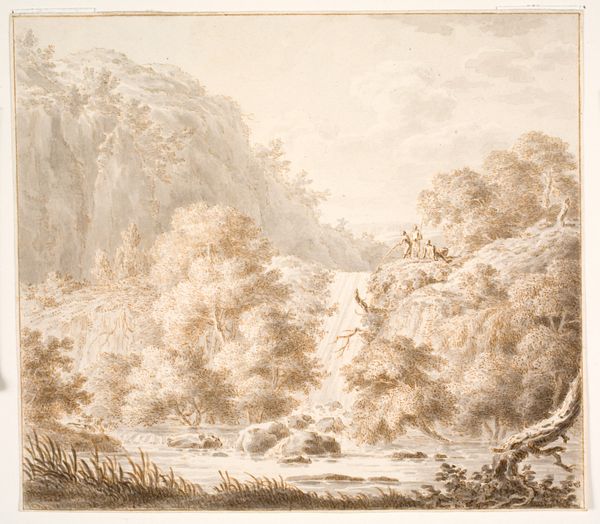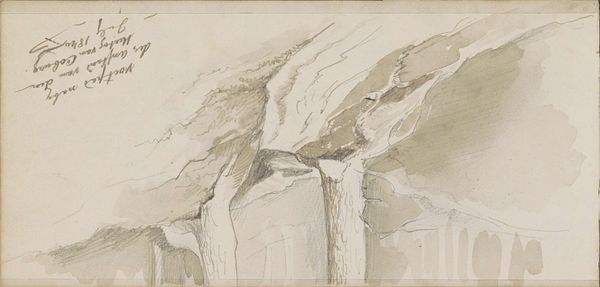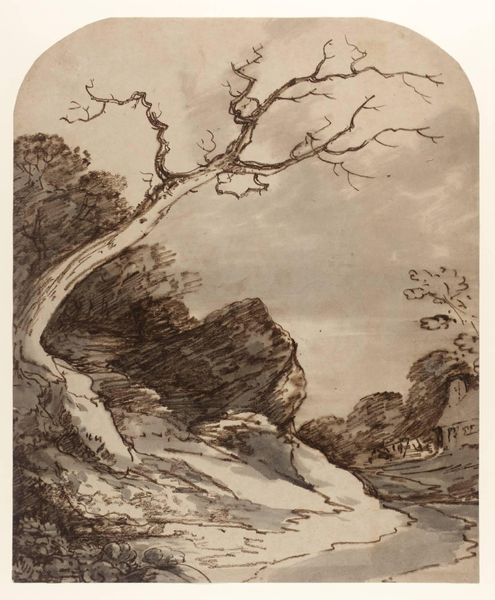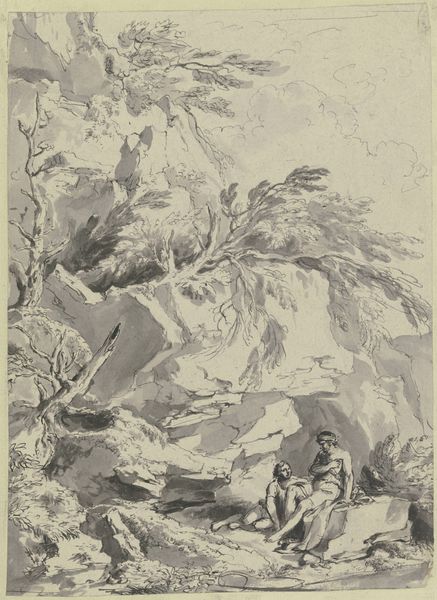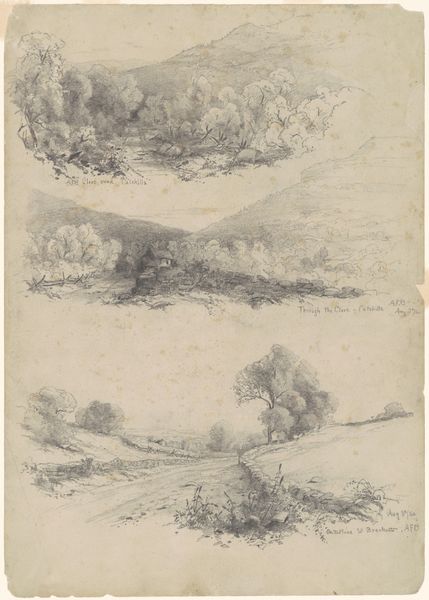
drawing, print, paper, ink, pen
#
drawing
#
narrative-art
#
baroque
# print
#
landscape
#
figuration
#
paper
#
ink
#
pen
#
history-painting
#
italian-renaissance
#
italy
#
mixed media
#
watercolor
Dimensions: 270 × 299 mm
Copyright: Public Domain
Curator: Let's delve into this work by Pier Francesco Mola entitled "Hagar and the Angel," a pen and ink drawing. It resides here at The Art Institute of Chicago. Editor: My first thought? So theatrical! It's like a stage set – all swooping lines and dramatic lighting highlighting this moment of divine intervention. Very Old Testament Hollywood, wouldn't you say? Curator: Exactly! It depicts a pivotal scene from Genesis, where Hagar, cast out into the wilderness with her son Ishmael, is near death when an angel appears. The landscape itself is actively engaged in the drama of her desperation. Editor: I love how the washes create such depth. Look at how the lines sort of vibrate – they give the sense of scorching heat, you know? That's effective storytelling through visual texture alone. Curator: It really is. Mola, situated within the Italian Renaissance and Baroque traditions, uses this historical narrative to speak to contemporary ideas about social marginalization and divine justice. Hagar’s story can be contextualized to consider questions surrounding migration, exile, and motherhood. Editor: Mmm, totally. And the angel – look at those wings! Not cute, chubby Renaissance cherub wings. These are serious wings for a serious rescue mission. Almost birdlike. He is definitely not messing around, telling her to go back to face Abraham and Sarah! I wonder how Hagar felt about that part? It wasn't exactly a fairytale ending for her. Curator: Precisely. This isn't simply a celebratory image of salvation; it provokes deeper contemplation of power dynamics and societal roles that underpinned these stories, particularly for women and those considered "outsiders.” Mola offers us a window into the social landscape of his time, even as he interprets a biblical one. Editor: That makes me see it differently now. Initially, I just reacted to its sheer dramatic energy, that Baroque flair. I see that this artwork contains layers, it pushes us to re-examine established historical narratives and to understand them through the people, especially the women involved, affected by it. Thank you! Curator: And thank you, your response shows that artistic expressions encourage open discourse and promote critical consciousness about art and its relationship to our world.
Comments
No comments
Be the first to comment and join the conversation on the ultimate creative platform.
